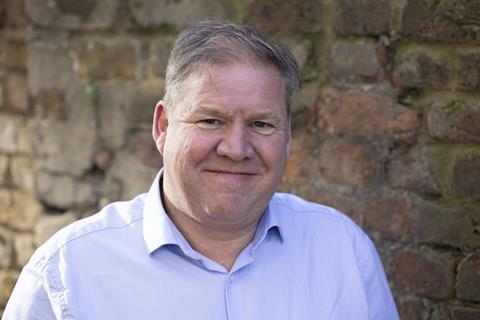Far from being about the past, heritage and conservation architecture is at the forefront of innovation, writes Mark Goldspink

Purcell was founded 75 years ago in response to the speed at which the past was being demolished and replaced in post-war Britain. We have never been anti-progress, but real innovation isn’t always as obvious as doing something with a new material just because it’s technically possible.
We’re not claiming to have understood in 1947 everything we all now know about construction and the climate catastrophe, but the practice grew out of an instinctive understanding that if we didn’t start protecting, adapting and enhancing our heritage, it would be gone before anyone realised the consequences.
What began as a niche strand of architecture is rapidly becoming mainstream in the 2020s. Adapting old buildings for new uses, extending, and modernising them to make them accessible and environmentally efficient is becoming the first choice, ahead of a build-new approach that has dominated British architecture since the Second World War.
The role of conservation in architecture is becoming akin to ecological conservation
In the context of the climate crisis, what may once have seemed the opposite of innovation, and the antithesis of progress, should now be considered a future-orientated approach. The role of conservation in architecture is becoming akin to ecological conservation – measures taken now for the sake of our future, rather than our past. We now retain buildings not only for their architectural and cultural value, but also for their carbon.
In our practice we use knowledge-led techniques of surveying with state-of-the-art technology. We combine practical knowledge (which is handed on to the next generations coming through our practice) with drawing and also with precise and clear written investigation and argument.
This builds new understandings of why and how we retain buildings. We listen and engage with discourse around the evolving relationship between architecture and cultural progress, so that our retention and adaptation of buildings reflects the here and now of society.

Since the practice was founded, there has always been a crucial corelation between the behaviour of materials and the architectural response, which is just as evident in our working lives today. We set up a Conservation School in 2016 because the level of knowledge and practical experience required for our projects isn’t widely taught as part of architectural training.
Few architecture graduates come out of their studies with more than a smattering of site experience and very few would know what happens to materials after 50 years of exposure to rain, extreme heat and traffic pollution and the structural and environmental consequences. The change in weather conditions brought about by climate change has a direct impact on how we look at roof repairs, for instance, which now must withstand more extreme rainfall.
Purcell’s core values have remain unchanged, but the world has shifted around us. Today, 75 years after Purcell was founded, the climate emergency increasingly requires that every architect should embrace the inherent value of our built heritage.
Postscript
Mark Goldspink is a partner and chief executive of Purcell
















1 Readers' comment